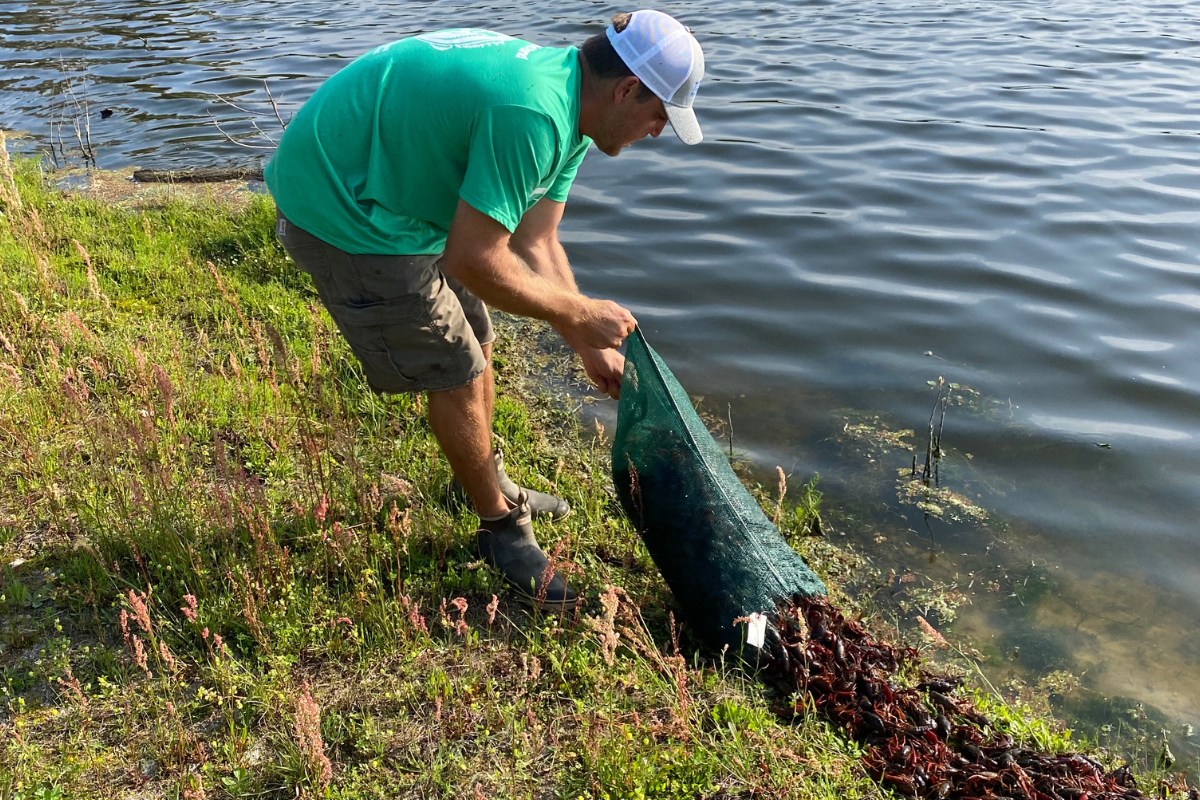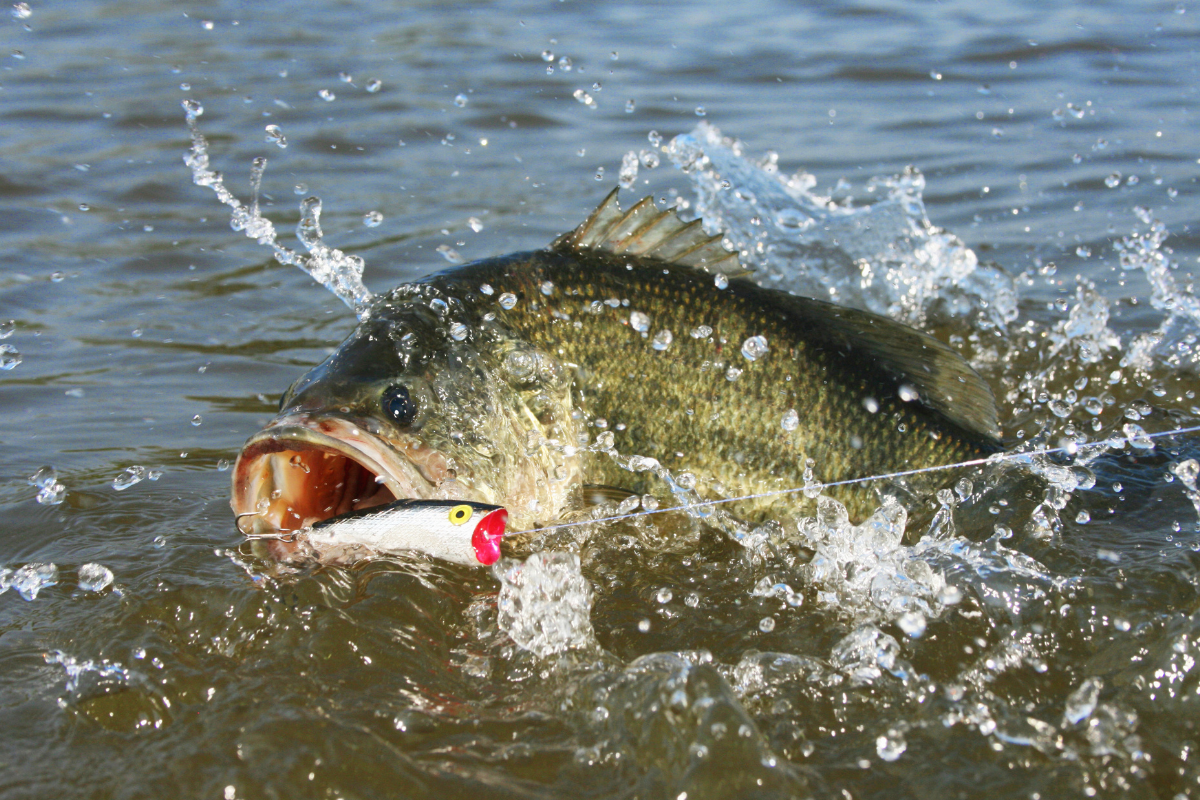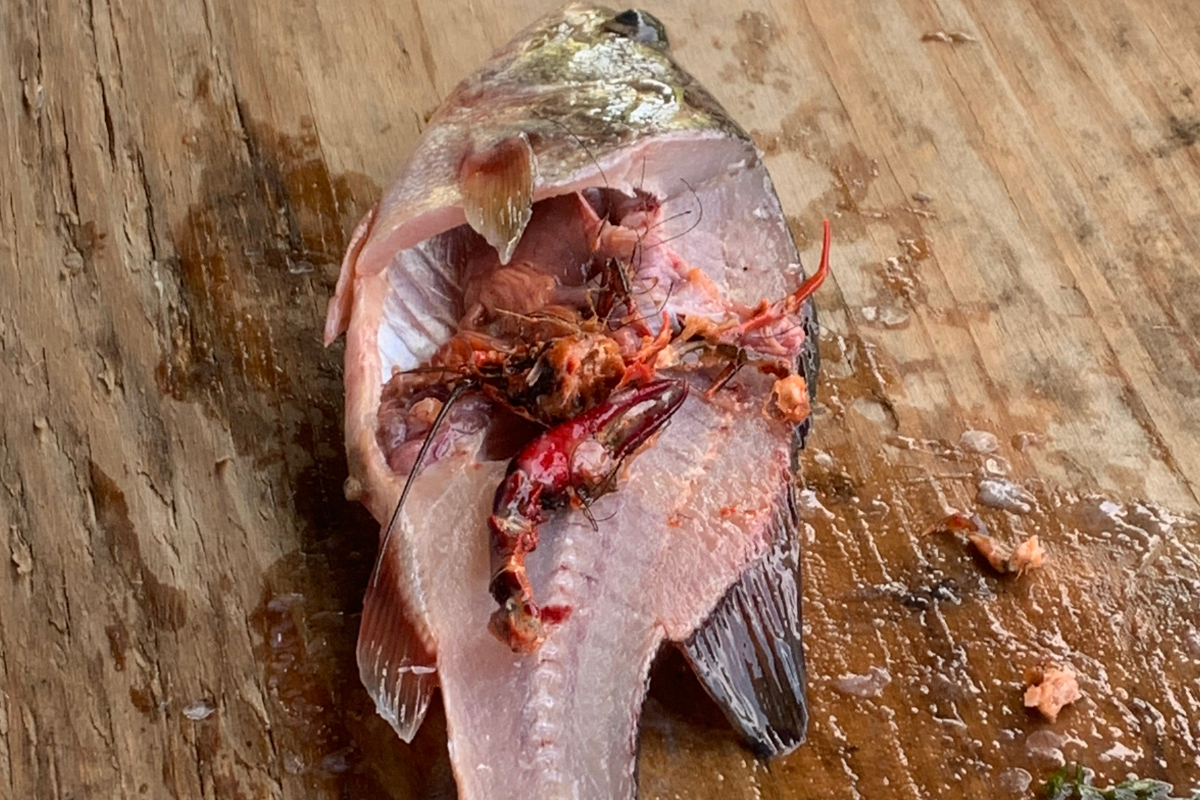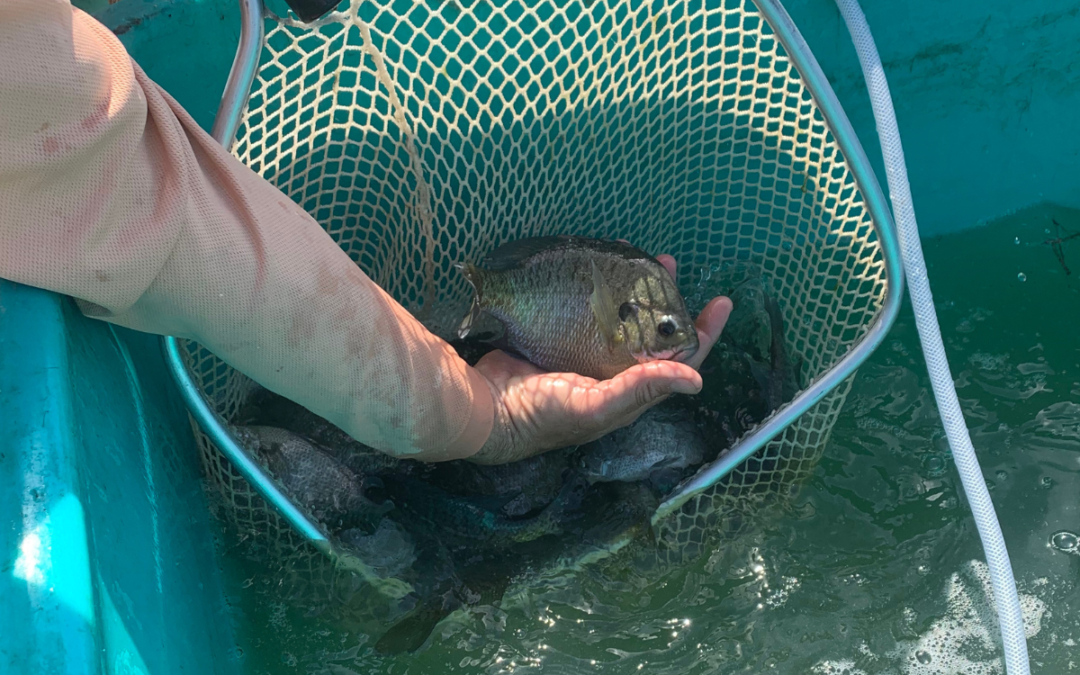Research suggests that a largemouth bass must consume 10 lbs of fish to gain 1 lb. This staggering statistic further emphasizes the need to have sufficient forage in a pond or lake to grow trophy largemouth bass. While bluegill is the obvious first choice for largemouth bass forage, ideally we’d like to see ponds with a wide range of forage diversity for largemouth bass.
Improving forage diversity will have several positive effects on your bass population. First, it will take the pressure off any single forage source that could be compromised due to heavy predation pressure. Bluegill are excellent bass food. But if that’s the only food available for bass in your pond or lake, you risk losing a significant amount of forage potential if that bluegill population begins to decline.
If predation pressure on bluegill is too high, they won’t be able to reproduce and sustain an acceptable level of population growth. When performing population surveys, we always look at the bluegill population statistics including fish density and standard weight per size class. We want to see these numbers maintained once we get them where they need to be. One way to do that is to increase forage diversity so that bluegill aren’t the only option. Below we’ll discuss some other great options to improve the forage diversity in your pond or lake.

Crawfish
Crawfish are a great way to add forage diversity and effectively put weight on largemouth bass. If you’ve ever cleaned many largemouth bass to eat, you’ve probably seen a crawfish in a bass belly. Crawfish don’t require much energy to capture, meaning the bass gets a higher net return on investment.
Crawfish should be stocked in the spring months with a recommended stocking rate of 100 lbs per acre. Open one end of the bag and carefully drag it along the pond or lake bank. This allows the crawfish to be evenly dispersed along the bank, preventing high mortality from fighting and overcrowding.
When water temperatures reach 50°F in the spring, crawfish will leave their burrows in search of a mate. This makes them an easy target for largemouth bass that have an increasing appetite as the water warms. Largemouth bass will feed heavily on the crawfish during the pre and post-spawn periods, allowing them to obtain nutrients without expending too much energy.

Threadfin Shad
Threadfin shad are another great option for increasing forage diversity and taking pressure off your bluegill population. Threadfin shad are high in protein and typically get no larger than 3-4″, making them the perfect snack for a growing largemouth bass in the 2-3 lb range. Shad will spawn multiple times a year in fertile waters and can be stocked in the spring and fall months.
In addition to improving the forage potential of your pond or lake, threadfin shad can also improve the recreational potential. These schooling baitfish will cause largemouth bass to alter their feeding habits, from ambush predator to feeding on top of the water. This opens up more windows for baits you can use to catch largemouth bass.
The only caveat to stocking threadfin shad is that they need larger, fertile bodies of water. We typically don’t recommend stocking threadfin shad in ponds less than 10 acres. When stocked in small ponds, they get eaten quickly and the population doesn’t sustain itself long-term.
They’re also filter-feeders, meaning they need fertile water with a strong phytoplankton population. Infertile ponds with clear water are not great for threadfin shad because they won’t have enough to eat. But if your pond has a green tint to the water, they should thrive!

Rainbow Trout
For pond or lake owners that are serious about growing trophy bass, stocking rainbow trout in the winter months is a great way to increase forage diversity. These fish are all meat and provide a significant protein source for largemouth bass in the winter months. They also eat fish food, increasing their weight and the end result for growing larger bass.
We recommend stocking 6-8″ long rainbow trout as the goal here is to feed those trophy bass. Whereas threadfin shad provide forage for those 3-4 lb bass, the rainbow trout are for the big fish in the pond. They are stocked seasonally in the winter because they’ll die when the water warms in the spring. But they’re a great option if trophy bass is your goal.
Forage Diversity = Big Bass
As mentioned above, you’ll always want to start by ensuring you have a strong bluegill population. After that is established, start adding other forage sources for largemouth bass. It will reduce predation pressure on any one particular forage source and also open opportunities for what lures you can use in your pond or lake.
Once the forage diversity is established, you’ll start to notice changes in feeding habits and hopefully larger bass. We love sampling our customers’ ponds and finding football-shaped bass as a result of our management efforts. When bass are plump and above standard weight for their length, we know we’ve done a great job providing plenty of options for them to eat.
Let Up Help Improve Your Pond!
If you’re in the south GA or north FL areas and need help growing trophy bass in your pond or lake, complete this form and we’ll contact you to schedule a time to meet. We look forward to turning your pond into a productive fishery for years to come!

